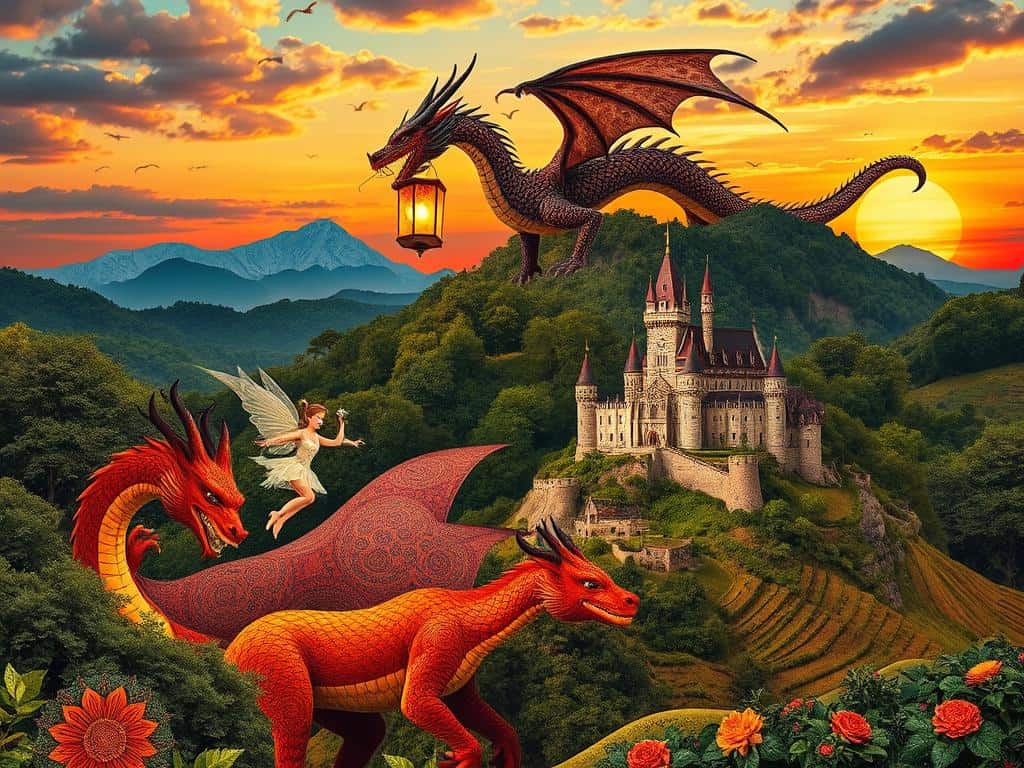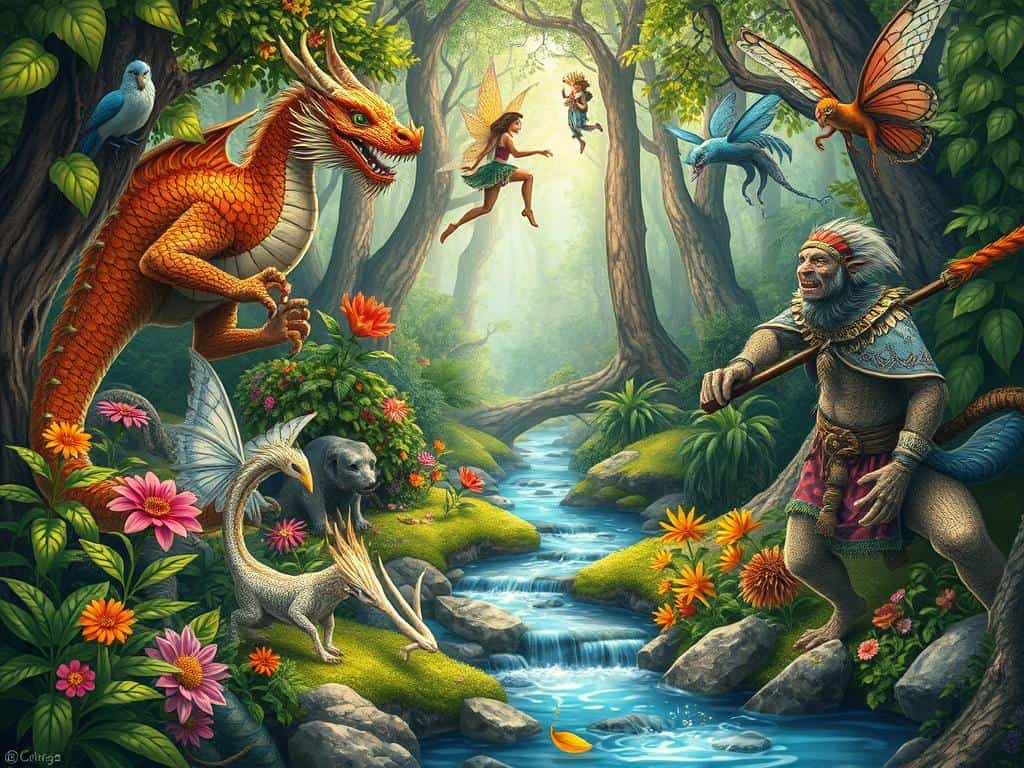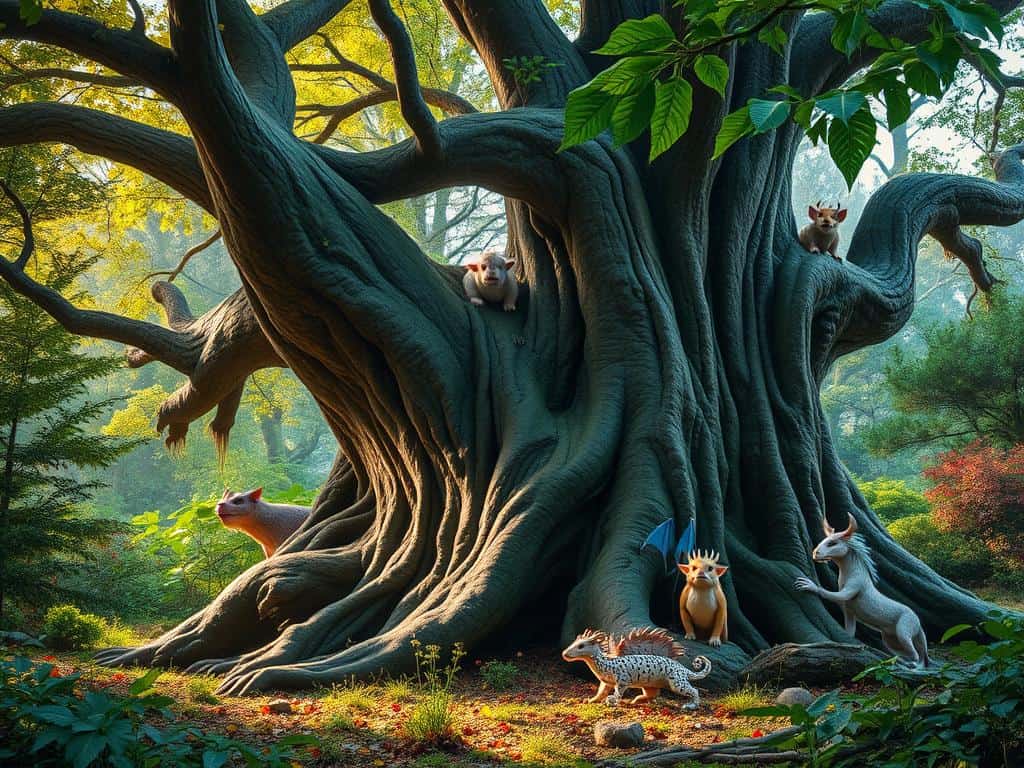As a child, I loved getting lost in magical tales. One evening, I found a story from ancient Greek mythology. It was full of gods and heroes, taking me to new worlds. I learned then that folk tales are more than stories; they’re a part of our culture and tradition.
Every tale shares wisdom, making us think about important values. Folk tales from places like Germany, the Congo, and India show our shared humanity. This article will explore the magical world of folk tales, showing how stories bring us together.
Key Takeaways
- Folk tales offer a glimpse into the values and morals of different cultures.
- Approximately 40% of stories involve Greek mythology.
- Many narratives focus on key themes like forgiveness, growth, and moral lessons.
- The diversity of folk tales spans various countries, including stories from Africa, China, and beyond.
- Illustrations and storytelling quality are often recognized with prestigious awards like the Caldecott Medals.
- A wide range of themes cater to various age groups, highlighting the universal appeal of storytelling.
Exploring the Diversity of Folk Tales
Folk tales open a window into the world’s many cultures. They show the richness of human experience through stories. Each community has its own tales, filled with history and values.
These global tales show how stories can bring people together. They share common themes, helping us understand different cultures.
The Global Spread of Enchanted Stories
Exploring collections like “Japanese Legends & Folklore” by A.B. Mitford and “The Book of Yokai” by Michael Dylan Foster, I see how tales cross borders. These books introduce Japan’s fascinating monsters and legends, giving us a peek into their society.
“Korean Folk Tales” by Pang Im also shares ancient stories, making them accessible to today’s readers. This exchange highlights the role of stories in appreciating diverse cultures.
How Folk Tales Reflect Culture and Tradition
Folk tales, like those in “In Quest of Indian Folktales” by Sadhana Naithani and “Tales of the Punjab” by Flora Annie Webster Steel, mirror the values of their creators. They often teach moral lessons and critique society, showing the human experience.
Through collections like “Cunnie Rabbit, Mr. Spider & the Other Beef,” we see West African tales preserved. These stories not only entertain but also teach important lessons. They show the importance of cultural stories in our traditions.

Folk Tales: A Journey Through Rich Narratives
Every culture has its own set of folk tales that show its true spirit. Stories like *The Magic Fish* from China and the *Jataka Tales* from India are great examples. They have engaging plots and themes that people love, showing how stories connect us across time.
Notable Folk Tales from Various Regions
In North America, a story about two travelers and a farmer teaches us about communication. *The Two Frogs* from Japan talks about how we see things differently. The Jataka Tales, with their lessons on greed and silence, teach us valuable lessons that everyone can learn from.
These stories share many experiences, showing us what we all have in common. They help us understand each other better.
Characteristics of Effective Storytelling in Folk Tales
Good folk tales have engaging plots and characters we can relate to. They often deal with tough choices, making us think about our own actions. The settings in these stories are vivid, adding to the lessons they teach.
Each tale has its own message, encouraging us to think deeply. They help us understand ourselves and others better.
Modern Retellings and Adaptations
In today’s world, we see folk tales in new ways. They’re turned into books and movies, making them fun for today’s readers. These updates keep the stories fresh while keeping their important messages alive.
Whether it’s a new take on a classic tale or a story from a different culture, folk tales continue to captivate us. They inspire and teach us, showing the power of storytelling.

Conclusion
Folk tales are a treasure trove of our cultural heritage. They show us the common truths that connect us all. These stories remind us of our past and the many cultures that make up our world.
These tales are like echoes from the past, filled with lessons and values for all ages. The Aarne-Thompson-Uther index groups them, showing the depth of human experiences. From ancient India to medieval Europe, these stories inspire and educate us.
Folk tales are a bridge between past and present, adding richness to our lives. They teach us the importance of sharing and learning from each other. They help us appreciate the diverse heritage that unites us.



